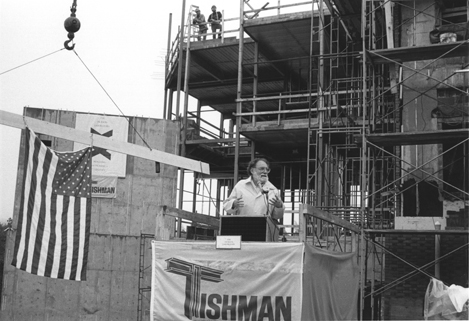
Faculty Research 1990 - 1999
Genetic variability in adult bone density among inbred strains of mice.
Document Type
Article
Publication Date
1996
Keywords
Analysis-of-Variance, Animal, Bone-Density: ge, ph, Disease-Models-Animal, Female, Femur: ph, Human, Lumbar-Vertebrae: ph, Mice, Mice-Inbred-Strains: ge, Osteoporosis-Postmenopausal: ge, Species-Specificity, SUPPORT-U-S-GOVT-NON-P-H-S, SUPPORT-U-S-GOVT-P-H-S, Toes: ph, Tomography-X-Ray-Computed
First Page
397
Last Page
403
JAX Source
Bone 1996 May;18(5):397-403
Abstract
More than 70% of the variability in human bone density has been attributed to genetic factors as a result of studies with twins, osteoporotic families, and individuals with rare heritable bone disorders. We have applied the Stratec XCT 960M pQCT, specifically modified for small skeletal specimens, to analyses of bones from 11 inbred strains (AKR/J, BALB/cByJ, C3H/HeJ, C57BL/6J, C57L/J, DBA/2J, NZB/B1NJ, SM/J, SJL/BmJ, SWR/BmJ, and 129/J) of female mice to determine the extent of heritable differences in peak bone density, pQCT scans were taken of femurs from (a) 12-month-old inbred strain females and (b) a subset of four strains (C3H/HeJ, DBA/2J, BALB/cByJ, C57BL/6J) at 2, 4, and 8 months. In addition, pQCT scans were also obtained from L5-L6 vertebrae and proximal phalanges from the same subset of four inbred strains at 12 months of age. Comparison of bone parameters among inbred strains revealed significant differences at each of the three sites investigated. Femoral and phalangeal bones differed among strains with respect to total and cortical density, mineral, and volume. Only cortical bone parameters were significantly different among strains at the vertebral site. With respect to strain differences, the highest value for any given bone parameter was found in the C3H/HeJ strain, whereas C57BL/6J values were absolutely, or statistically, the lowest. Similarly, with respect to bone sites, cortical bone density was significantly correlated among strains. On the other hand, we found that none of the femur, vertebral, or phalangeal parameters correlated with body weight, even though body weight varied by 86% among those inbred strains. The developmental studies of femurs conducted at 2, 4, and 8 months of age with C3H/HeJ, DBA/2J, BALB/cByJ, and C57BL/6J females showed differences in total density among strains at 2 months and thereafter. Adult peak bone density was typically achieved by 4 months, whereas femurs continued to lengthen for 4 to 8 months thereafter. We conclude that (1) major genetic effects on femoral, vertebral, and phalangeal bone density are detectable among inbred strains of mice; (2) cortical bone density shares common genetic regulation at the three measured sites; and (3) within the femur, genes that regulate length and density are different.
Recommended Citation
Beamer WG,
Donahue LR,
Rosen CJ,
Baylink DJ.
Genetic variability in adult bone density among inbred strains of mice. Bone 1996 May;18(5):397-403

